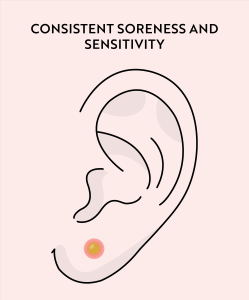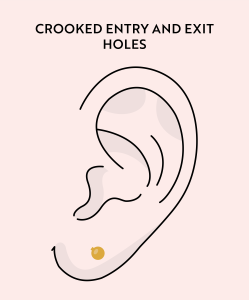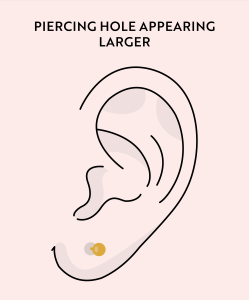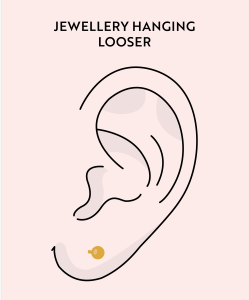Piercing migration is the body’s response to foreign material in the body. The immune system may attempt to reject and move your piercing from its original spot to a new one. This can lead to piercing bumps that migrate the piercing, causing it to move and become crooked! Piercing migration may also be referred to as piercing rejection.
It may be difficult to see piercing migration from the front of the piercing but is something to keep in mind. We’re here to help with what you need to look out for, and what to do if you find yourself in this situation.
How to tell if your piercing is migrating?
Migration is a slow process, and it can be tricky to see signs of piercing migration. If you are struggling to see migration from the front, we recommend using a second mirror or asking a family member or friend to have a look!
A few piercing migration signs to look out for are:
- Consistent soreness and sensitivity
- Skin thinning around jewellery
- Jewellery hanging looser
- Piercing hole appearing larger
- Crooked entry and exit holes




Ask an Essential Beauty Piercing Expert if you have any queries or concerns. We recommend reaching out promptly to our team, as migration may put your piercing at risk of infection!
How to prevent piercing migration?
It is important to not leave larger jewellery in for extended periods of time. Remember, even after your piercing has healed.
Leaving large jewellery in your piercing makes it prone to catching or snagging on hair and clothing and can push down onto the skin when sleeping.
Avoid excessive pressure to the piercing during the healing process. Try to avoid sleeping on the piercing, or tight clothing pushing on it for long periods of time.
Try to avoid creating any trauma to your piercing. This can include friction from clothing, towels, loofahs, playing with the jewellery, knocking the piercing, and over-cleaning. These actions may cause piercing bumps that lead to the migration of your piercing.
Always follow appropriate aftercare as recommended and directed by your Beauty Therapist. We always recommend our Sterilear 2-Step Piercing Sprays.
If you have any questions about your piercing, contact your local Essential Beauty salon and have a chat to our Piercing Experts!
Are certain piercings at risk?
All piercings are subject to piercing migration or rejection, some are more common than others though! Some of these may include:
- Belly button/navel piercings
- Nipple piercings
- Nose piercing
- Eyebrow piercing
- Helix piercings
